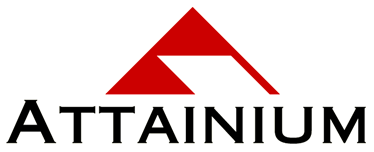The Next Level of Risk Management
This simple truth applies to every business – not just associations. When it comes to nonprofit operations however many volunteer leaders associate risk management almost entirely with insurance. But insurance is just a subset of risk management – one of many techniques available for your organization to reduce the frequency of disruptive events and to mitigate the severity of loss when claims happen.
A more comprehensive approach to risk management requires the engagement of all stakeholders not least those serving at the highest leadership tier. The responsibility to protect the entity is among the essential elements of fiduciary duty, owed by officers and directors of both nonprofit and for profit boards alike.
Everyday Risk Management
Your association employs a variety of risk management techniques many of which take place outside the gaze of volunteer leaders. Activities such as backing up data, adhering to accounting controls or performing pre-employment background checks are examples of effective and relatively inexpensive non-insurance risk management techniques used by many associations.
And of course there’s insurance. Some types of insurance, worker compensation for example, may be required by law. Other types of coverage such as property or general liability may not be required as a matter of law although they may be required by contract as in the case of a lienholder (property) or landlord (general liability). If it’s not required why is insurance so essential to our personal and business lives? Because at the most basic level the concept of insurance as a safety net is almost intrinsic. Of the many options available, the transfer of risk to a third party in consideration for money (an insurance premium) is perhaps the most recognizable risk management technique - even if the policy terms are not well understood. To be clear…the issue isn’t that there is too much insurance (that may or may not be true). The problem is there is too much reliance on insurance! When it comes to insurance safeguards little is known but much is presumed (“…of course were covered that’s what we’ve got insurance for…).
Everyday Risk Management…Is That All There Is?
Whether the issues involve insurance or non-insurance risk management, most experts agree that the first stages of planning should focus on reasonably foreseeable loss scenarios. Fortunately there are many resources that can help associations identify those loss scenarios both in terms of frequency and severity. The next level of risk management is more challenging, more time consuming and more complex - but no less important.
The Next Level of Risk Management
Unlike risk management as it is practiced in so many organizations, this next level isn’t an annual exercise that concludes with a policy renewal or that can be delegated to someone without any training or experience in risk management (as insurance often is).
Manmade or Natural Disaster – Bad Things Do Happen
During a recent visit Bob Mellinger, president of Attainium Corporation, looked out my office window at the Metrorail and commercial railroad tracks less than 200 feet away. Referring to the worst accident in the history of the DC metro rail system, he asked, “What impact would it have on your business if the crash had taken place under your window here in Rockville instead of Fort Totten?” I’ve never thought about that and I’m someone who sees much of the world through a risk management filter.
The Federal Emergency Management Agency has declared 91 major disaster declarations by mid November 2011. From mudslides, snow storms, tornados and droughts to floods, hurricanes and earthquakes, last year saw more billion dollar natural disaster events (over $50B) than any other year on record according the National Climatic Data Center. Per Mellinger, “…it’s not just that the frequency of natural disasters has increased over the past decade, disasters are occurring in regions of the country not traditionally exposed to such events”.
Crisis Management & Contingency Planning…The Next level
The next level of risk management requires a more in depth analysis of risk faced by the organization with emphasis on how to plan and implement the individual, departmental and organization wide response needed in the face of uncertain events. The next level of risk management requires the organization to embrace a culture of disaster preparedness. The reality is that the world is far too complex for even the most robust risk management planning to capture and plan for all possible loss scenarios.
# # #

